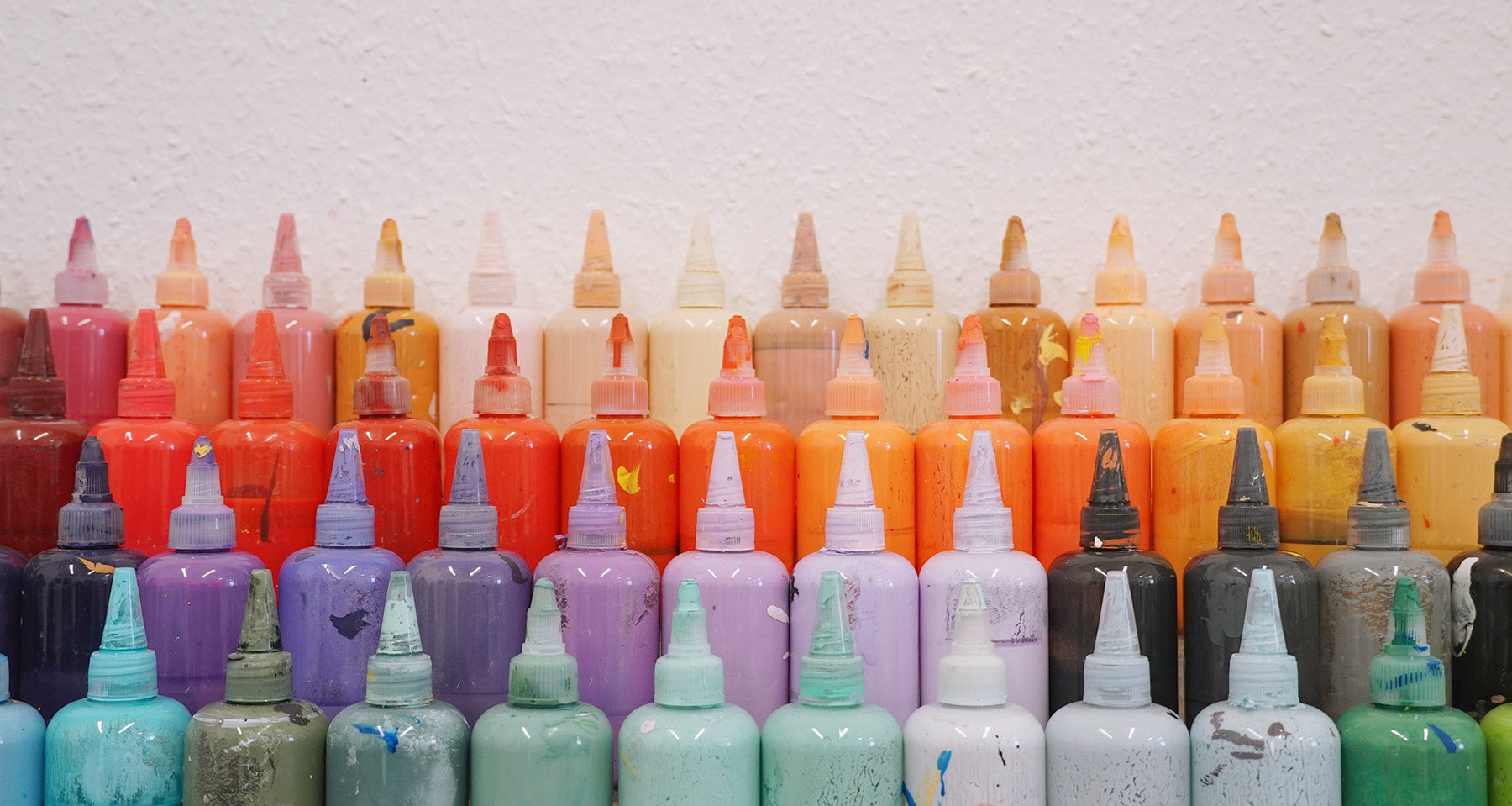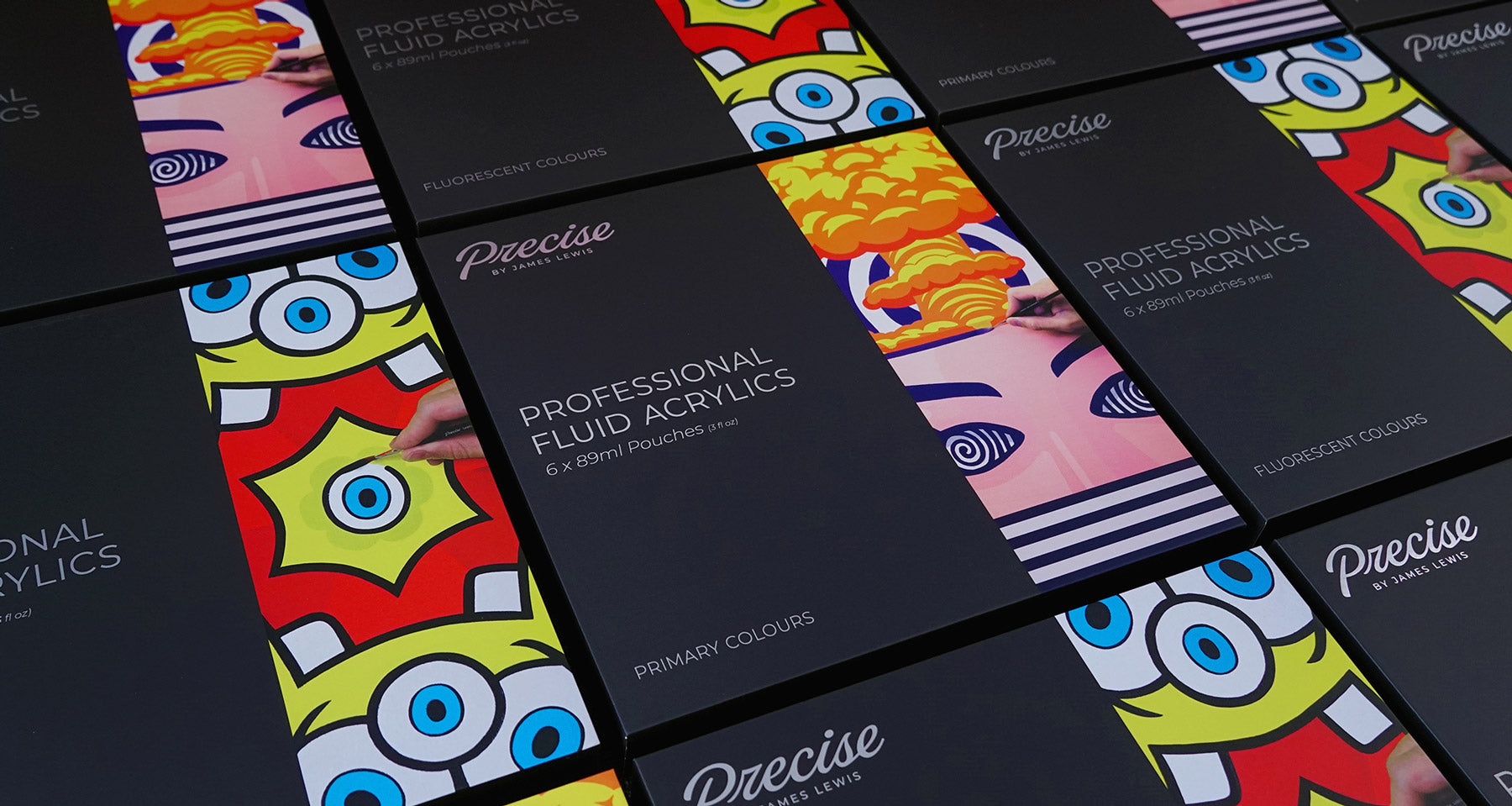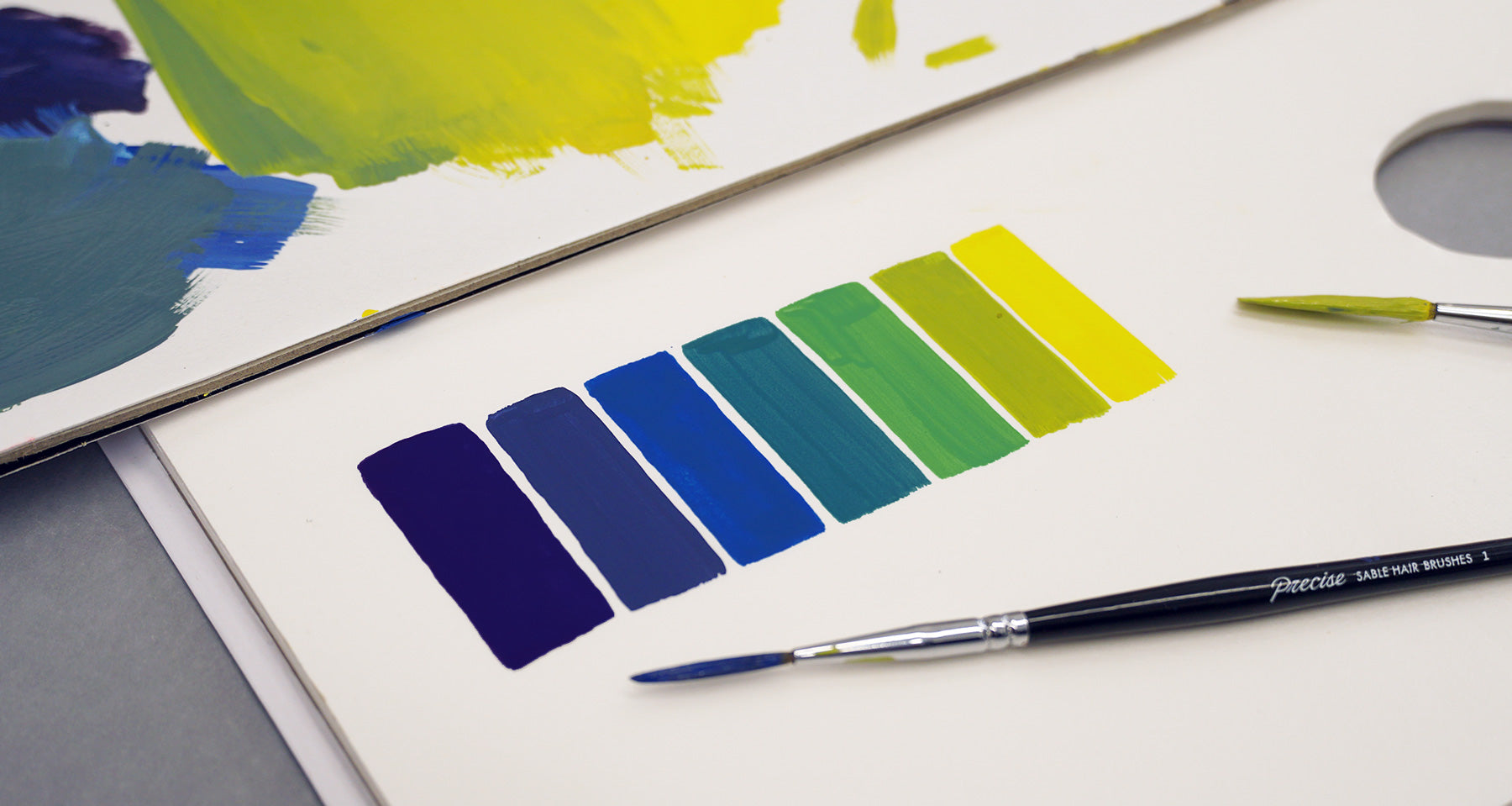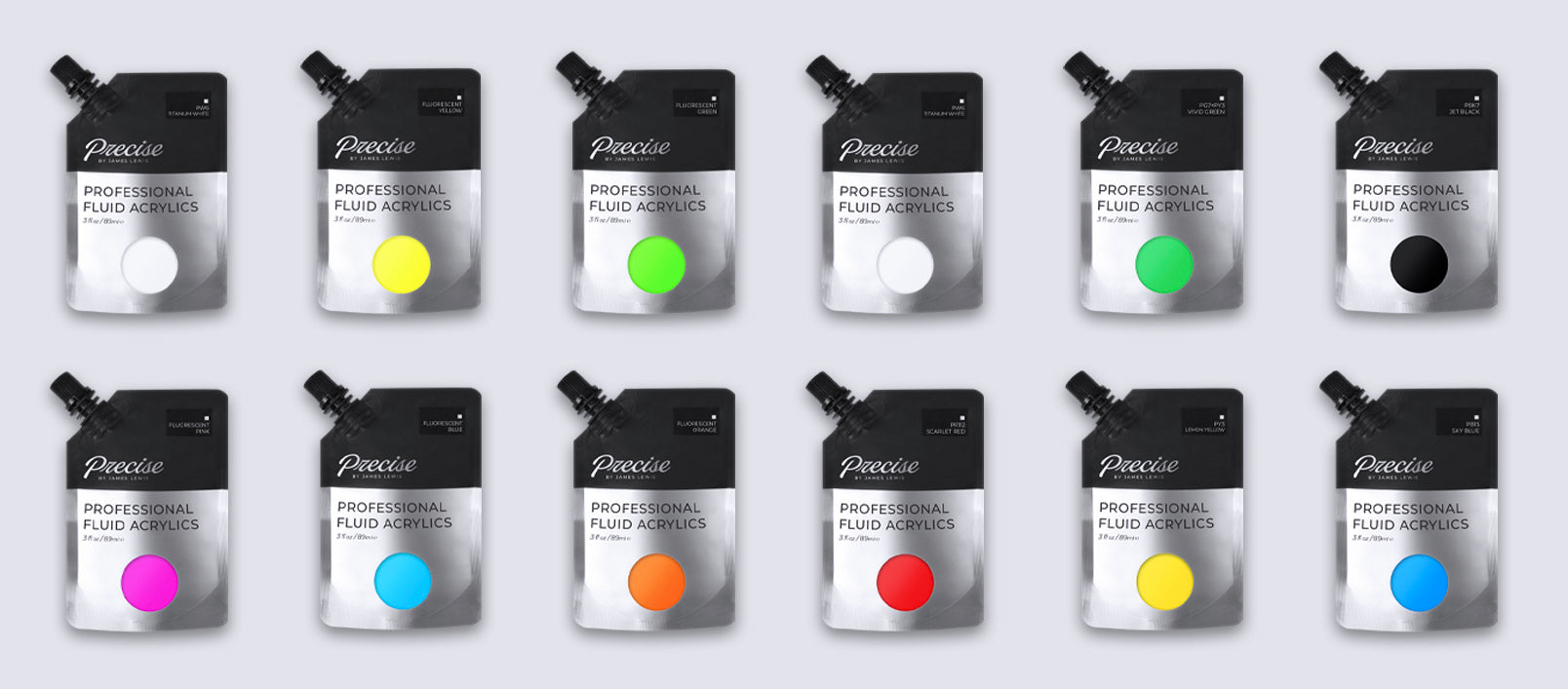Tutorial
How to mix paints
Written by James Lewis
Mixing paints on the fly can be messy and frustrating, which is why many artists (myself included) prefer to pre-mix colours before starting a painting. Not only does it save time, it ensures your colour scheme is cohesive.
In this tutorial, I’ll walk you through my process for mixing and matching colours so your paintings look cohesive, balanced, and vibrant.
What Do I need to Get Started?
Whether you’re trying to colour match, or develop a cohesive colour palette, here are a few things you need to get started:
- Paint
Each type of paint will produce a different finish, so pick one that suits your project. In this tutorial we will focus on painting cartoon characters, so the Precise fluid acrylic paints are a great choice. They’re smooth, vibrant, and perfect for consistent coverage. - Airtight bottle
Anything from small jam jars to large bottles will work, it depends on the scale of your project. These are for mixing and storing your custom paint colours in, so make sure they’re clean and airtight. - Surface
As you're mixing your paints you’ll need somewhere to swatch your colours to make sure they all work well together. A non-absorbent paper palette would be perfect for this, but you could also use any clean surface you have on hand.

How Do I choose which colours to mix?
I’m sure you remember learning about the colour wheel in art class. If not, that would be a great place to start your learning.
You can mix almost any colour from red, yellow, blue, green, white, and black so make sure you have these paint colours on hand. Having a wider selection of colours can speed up the paint mixing process, but for now these colours will do.

How do i mix the colours?
In this section of the tutorial you will be mixing paint colours yourself using a cartoon character reference image.
To start, pull up an image of a cartoon character, ideally one that has multiple colours and shades. The character illustration will likely include primary colours, but we already have those paint colours on hand so let's focus on mixing the other colors:
- Start with a base colour.
With the target colour reference on hand, start by adding the closest primary colours (or white for light colours) to your bottle. - Check the colour wheel.
See where the base colours is now and what adjacent colours you need to add to shift your paint colours closer to the target colours. - Shift the hue.
Add small amounts of other colours until you get closer to your target colour. - Adjust brightness.
If necessary, add white to tint the paint colour, or a complementary colour (or black) to darken the colour. - Mix slowly, test often.
Even a small drop of paint can completely change the hue, so mix slowly and swatch your colours with each adjustment.
Once you’ve mixed all your colours, paint swatches side by side on your paper pallet or clean surface. Let them dry completely and evaluate the colours as a set.
A pale yellow may seem weak on its own, but next to white paint it can pop beautifully. Adjust your colours as needed until your palette feels balanced and intentional.
Do I always have to follow the colour theory rules?
Rules are made to be broken, right? Once you understand the basics you’re free to experiment with unique colour combinations to define your own style.
One trick I love is sneaking a bit of fluorescent fluid acrylic paint into my paint mixtures to achieve an unreal level of vibrancy. Be careful though, too much vibrancy and your other colours may look dull by comparison.
Mixing colours might feel intimidating at first, but with a little patience is can be one of the most rewarding parts of the painting process.
With a few primary paint colours, airtight bottles, and a little patience, you can create colour palettes that are not just functional, but uniquely yours.




